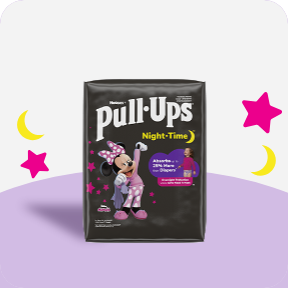How to Potty Train
Toddler Development & Potty Training Readiness
18 Jan, 2023
4 min. Read
Toddlers aren’t the same as adults — or even older kids! They have only a beginning sense of wanting to follow the rules or feeling the need to be socially accepted. They have a very poorly developed sense of memory and don’t yet plan for the future. Their ability to control their bodies is only starting to emerge. And while they can’t yet control their impulses, they really want to learn how.
If you consider that toddlers only learned to walk and talk in the last year or so, you’ll realize just how fast their lives change. So if you’re wondering “What is my toddler thinking?” and “Is my child ready to potty train?” you’re not alone — and there’s a lot to keep in mind as you ponder the answers.
What is the toddler perspective on potty training? Toddlers truly do want to learn to be in control of their bodies, and it’s what parents and caregivers want, too. The best way to encourage this is by avoiding the power and control struggles that easily become a hallmark of this age. In this way, parents are more potty “coach” than potty “supervisor.”
Look for signs of potty training readiness and take the Potty Training Readiness Quiz to figure out if your toddler is ready to start potty training. Kids usually start to show signs of readiness around 18 to 24 months, but every child is different. So don’t get a particular age stuck in your mind — and don’t feel pressured from friends or family who think your child should start at a certain time.
Potty training is truly the signature developmental achievement of toddler-age children because it combines all these complex tasks — physical, cognitive and emotional — into one seemingly simple act. So enjoy the journey as you help your child develop into a Big Kid who has newfound control over their body, mind and emotions.
Be patient as they come to know all their body can do. And celebrate the little successes as well as the big ones. Rewards like stickers, special activities like trips to the park, and lots of high-fives and hugs can go a long way toward building their confidence!
If you consider that toddlers only learned to walk and talk in the last year or so, you’ll realize just how fast their lives change. So if you’re wondering “What is my toddler thinking?” and “Is my child ready to potty train?” you’re not alone — and there’s a lot to keep in mind as you ponder the answers.
Child Development and Potty Training Readiness
Asking a child who was a sweet peanut swaddled in a blanket just a couple years ago to master a complex task like potty training is a big deal. It requires several big milestones in development:- Developing body awareness. For toddler potty training to work, they have to understand when they need to go — and when to interrupt fun play time.
- Emotional and moral skills. While kids inherently have different potty personalities, all kids need to develop a sense of wanting to please us by doing the right thing. Seeking our approval for everything from wearing Pull-Ups® training pants to using the potty is a big step.
- Cognitive development. Potty training kids need to figure out where to go, who to ask for help and how to get there — all while physically holding it, getting clothing off and finally letting it all go. It’s a complex task for anyone, much less a toddler.
How to Help Your Child Potty Train
When you think your child is ready to start potty training, there are some steps you can take to help them build confidence and support them as they build their developmental skills:- Plan what you’ll say. Figuring out the words for potty training you’ll use — pee, wee wee or urine, for example — is an important step in getting ready for potty training. Using words consistently, no matter which ones you choose, can help you and your child communicate well. Knowing your child’s potty personality can help you figure out how much detail you’ll give about the potty training process too. While a cautious toddler will want to know all the details, high-energy kids definitely won’t want to pause long enough for a big explanation. Also think about what potty training praise you’ll use. Some personalities work best with very specific praise, such as “I like how you remembered to flush” or “You did a great job being patient while you waited for the pee to come out.” It’s easy to say a quick “Nice job!” But more specific praise might feel unnatural at first, so it’s a good idea to practice by yourself.
- Accomplish some important tasks. Before you officially launch the potty training journey with your child, check out this to-do list. It includes some important steps you can take to help potty training work for your toddler including making sure they have easily removable clothing, making sure they’re comfortable with a sturdy step stool and toilet seat or potty chair, and talking to Potty Partners such as babysitters and grandparents about your plans.
- Make it fun. While potty training is a huge step for kids, that certainly doesn’t mean it has to be all serious. Look for ways to make the journey fun for you and your little one. This Which Is Faster? game can show your child that wearing Pull-Ups® training pants and using the potty is much faster than wearing diapers. And that means they can get back to play time faster. This Can You Do What I Do? game is also a fun way to introduce the steps in potty training by asking your child to mimic what you do — something that’s fun for them and can help potty training feel less daunting.


























